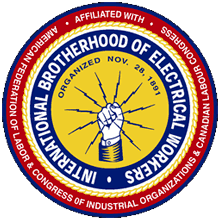WASHINGTON—The percentage of U.S. workers who are union members increased in 2020 for the first time in more than 10 years — because members lost their jobs at a much lower rate than nonunion workers during the COVID-19 pandemic, according to survey results released Feb. 19 by the federal Bureau of Labor Statistics.
The number of union members fell by 321,000, to 14.3 million, but their share of the workforce rose from 10.3% in 2019 to 10.8%, as some 9.3 million nonunion workers lost their jobs. The percentage of workers represented by unions, which includes nonmembers, also increased, from 11.6% to 12.1%, the highest level since 2015.
“The disproportionately large decline in total wage and salary employment compared with the decline in the number of union members led to an increase in the union membership rate,” the bureau’s New York-New Jersey information office said in a statement.
New York remained the state with the second highest union density in 2020. The survey found 22% of the state’s wage and salary workers were union members, up from 21% in 2019 and second to Hawaii’s 23.7%. New Jersey ranked eighth, with union membership rising from 15.7% of its workforce to 16.1%.
In both states, however, the number of employed union members declined: In New York, it dropped by 71,000, to an estimated 1,661,000. In New Jersey, it fell by 42,000, to 600,000. But New York lost about 700,000 jobs overall from 2019 to 2020, and New Jersey lost 375,000.
Union density in New York had been gradually declining since 2015, when 24.7% of workers were members, except for a small bump upwards in 2017. In New Jersey, it’s been rising since 2018, when it hit a low of 16.2%.
Connecticut ranked sixth nationally, with 17.1% union members — up from 14.5% last year, as unions gained 18,000 members while the state was losing 147,000 jobs.
Hawaii and New York were the only states where more than 20% of workers were union members. Nine others had more than 15%, including Rhode Island, Michigan and Minnesota, and a solid West Coast bloc of Alaska, Washington, Oregon, and California.
Nine states had fewer than 5% union members, including Texas, Virginia and Georgia. South Carolina was lowest, at 2.9%, with North Carolina and Utah next up from the bottom.
The pandemic sharpened the differences in union representation between the public and private sector. The number of government employees who are union members actually increased by 107,000, from 33.6% to 34.8%, even though overall public employment fell by 389,000. In local governments, the union share rose from 39.4% to 41.7%, as unions gained 24,000 members despite the elimination of more than 500,000 jobs.
But in the private sector, where slightly less than half of union members work, their percentage increased only from 6.2% to 6.3%. Total private-sector membership declined by 428,000, as overall employment fell by more than 5.1 million.
That drop means that private-sector workers are once again less than half of union members in the U.S. They fell to less than half during the Great Recession, but regained their majority in 2013.
Strikes decline
The BLS also reported that there were only seven “major work stoppages” (strikes or lockouts involving at least 1,000 workers for at least one shift) in 2020, tying it with 2017 for the second-lowest number since the Department of Labor began keeping records in 1947. They involved 24,000 workers, primarily education and health-care workers in state and local government — a drastic drop from the more than 400,000 who walked out in 2018 and 2019, which saw several statewide teachers’ strikes.
“While low unemployment and anemic wage growth likely explained the large increase in strikes in 2018 and 2019, the COVID-19 pandemic and high unemployment led to the sudden drop in 2020,” Heidi Shierholz, policy director and senior economist at the Economic Policy Institute, said in a statement.
However, the EPI cautioned that the BLS figures did not include numerous smaller and shorter walkouts, such as those on May Day by retail workers demanding adequate protections from the coronavirus.



